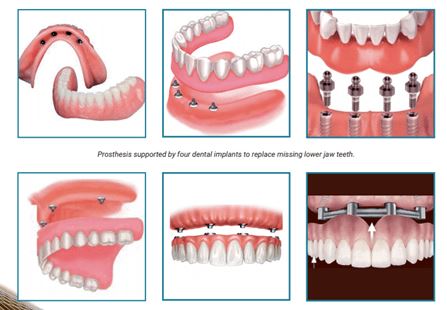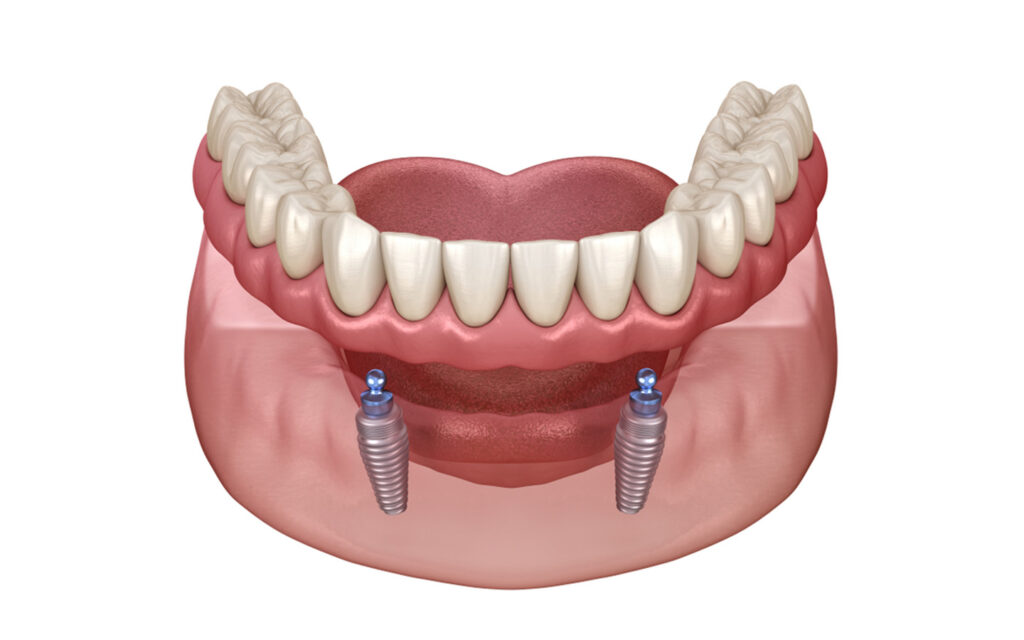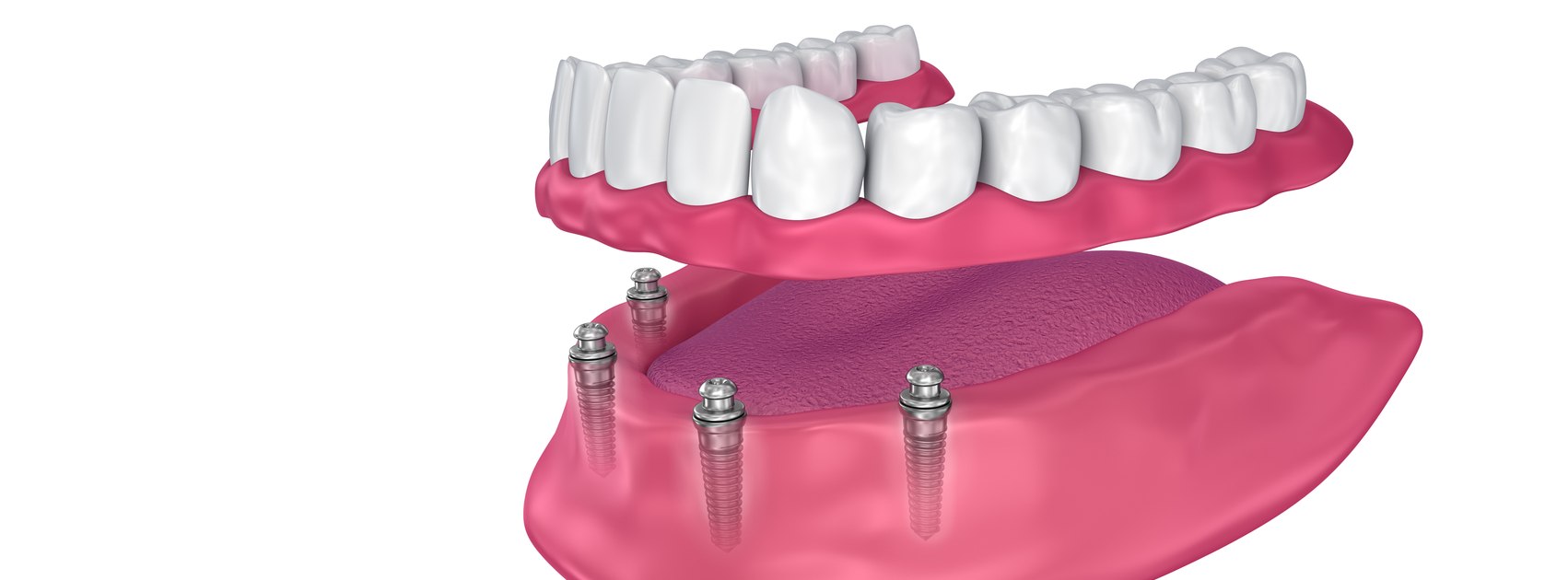Implant-supported overdentures are a common solution for individuals needing to replace teeth. They are a highly beneficial alternative to traditional dentures.
What is an implant-supported overdenture?
As the name suggests, an implant-supported overdenture is supported by dental implants. The overdenture simply snaps onto implants surgically placed in the front of the jawbone, as indicated in the image below.
These implants effectively act as an anchor for the overdenture. An implant-supported overdenture is secured in the mouth, just like natural teeth are. At night, it can be removed for cleaning and maintenance.
These types of dentures have been a common treatment for dental patients for more than 20 years.
How do implant-supported overdentures differ from traditional dentures?
Traditional dentures rest only on the gums; they are not supported by (or attached to) dental implants in the jawbone. They can be more easily taken in and out of the mouth as required. However, they have some comparative limitations, as outlined below

What are the benefits of implant-supported overdentures?
The major benefits of implant-supported overdentures include:
- Being more stable than traditional dentures makes chewing a wider variety of foods easier. If you like to eat food like steak, you’ll find it easier to take stronger bites with implant-supported overdentures.
- Covering less of the palate (roof of the mouth) than traditional dentures (because the implants hold the denture securely in place).
- Potentially improving your phonetic speaking capability and no loose dentures.
- Generally it is more comfortable than traditional dentures, with less gum and cheek irritation.
- They are unobtrusive, as they have a chrome or acrylic base that looks like gum.
- They won’t accidentally slip or fall out of your mouth, so you can be confident in talking and laughing freely in front of others.
- The implants function like tooth roots, helping to preserve your jaw bone. More jawbone loss is typically associated with traditional dentures.
- They typically don’t need repairing or replacing as often as traditional dentures that tend to wear away the jawbone over time.
- They can support your lips and cheeks to provide a full shape to your face.
Types of implant-supported overdentures
Implant-supported overdentures come in two types:
- Ball-retained, and
- Bar-retained.
Ball-retained
As the name suggests, a ball-retained overdenture has ball-shaped implants that fit into sockets, as illustrated on the left.
These connections are very easy to clean. Ball-retained overdentures are also called stud-attachment dentures.

Bar-retained
A bar-retained overdenture has the jawbone’s dental implants attached to a thin metal bar that follows the jawline.
This type of implant-supported overdenture is generally recommended for people who have a low density in their jawbones. The bar helps to support teeth stability. The clips and attachments on bar-retained overdentures usually need to be replaced every 6 to 12 months.
Eligibility criteria for implant-supported overdentures
To be eligible for implant-supported overdentures, you need to meet all of the following eligibility criteria:
- You don’t have any teeth in your upper jaw, your lower jaw, or both.
- You have enough jawbone to support the necessary implant attachments.
- You have a satisfactory dental and medical history.
How much do implant-supported overdentures cost?
Implant-supported overdentures cost more than traditional dentures. The cost of overdentures depends on your individual characteristics and needs. For example, if you require lower overdentures, upper overdentures, or both.
Overdenture costs also depend on the type and number of dental implants that you get (i.e. ball-retained or bar-retained). You should make an initial appointment with a prosthodontist (dental specialist) to determine feasibility and cost.
Costs can include:
- 3D X-rays and CT scans of your mouth and jaw structure,
- a temporary denture until your implant-supported overdenture is ready,
- surgical placement of the dental implants into your jawbone, and
- the implant-supported overdenture itself.
Cost is always an important consideration in any dental decision, but it’s important to analyse the overall benefits in relation to the cost. Paying more for the long-term benefits of implant-supported overdentures can be worthwhile. It’s possible to get implant-supported overdentures for not a lot more than the cost of traditional dentures.
Implant-supported Overdenture: supported by dental implants, the cost starts from $20,000* – *Pricing guide only – information is up to date for 2022
How we can help
At Aria Dental, we provide the highest-quality dentures, including implant-supported overdentures. Our other dentist services include Invisalign teeth straightening, cosmetic dentistry and other high-end procedures. To find out more about dental implants, All on 4 full arch replacements or overdentures, visit our pages.
Contact us today to find out more!
